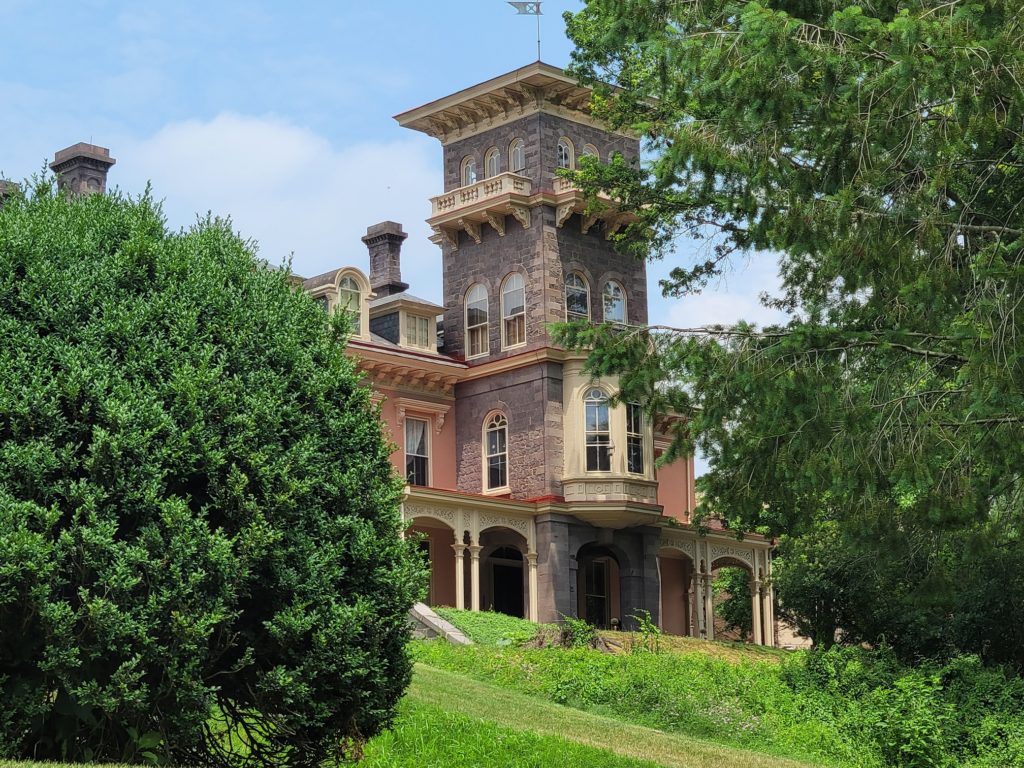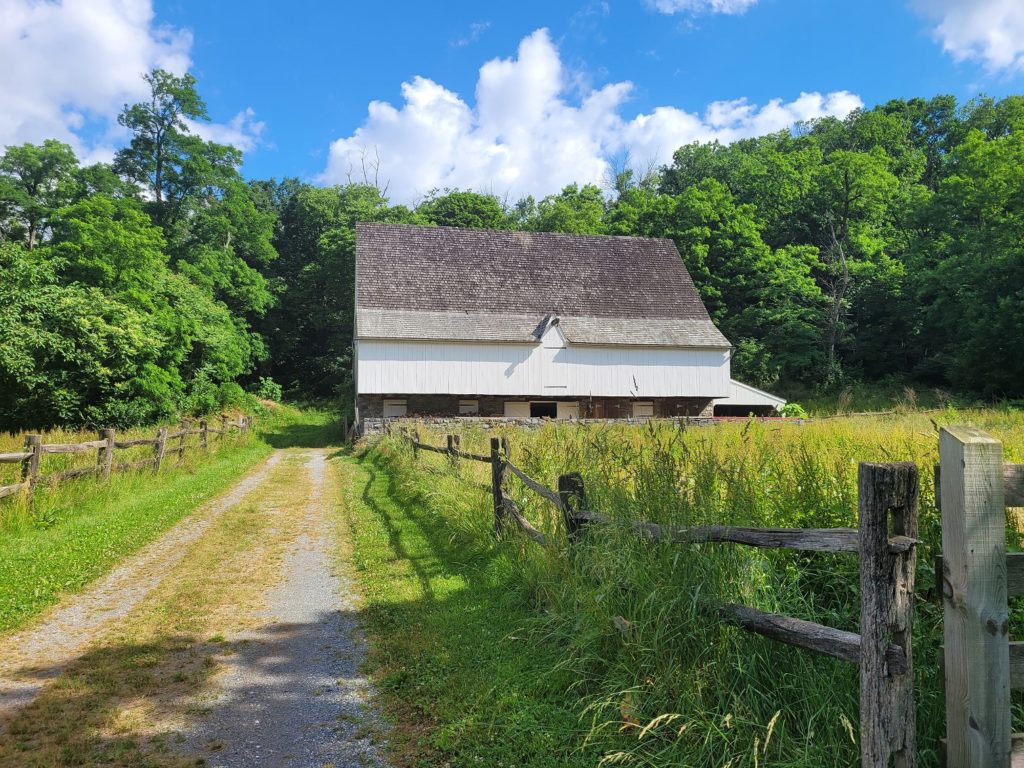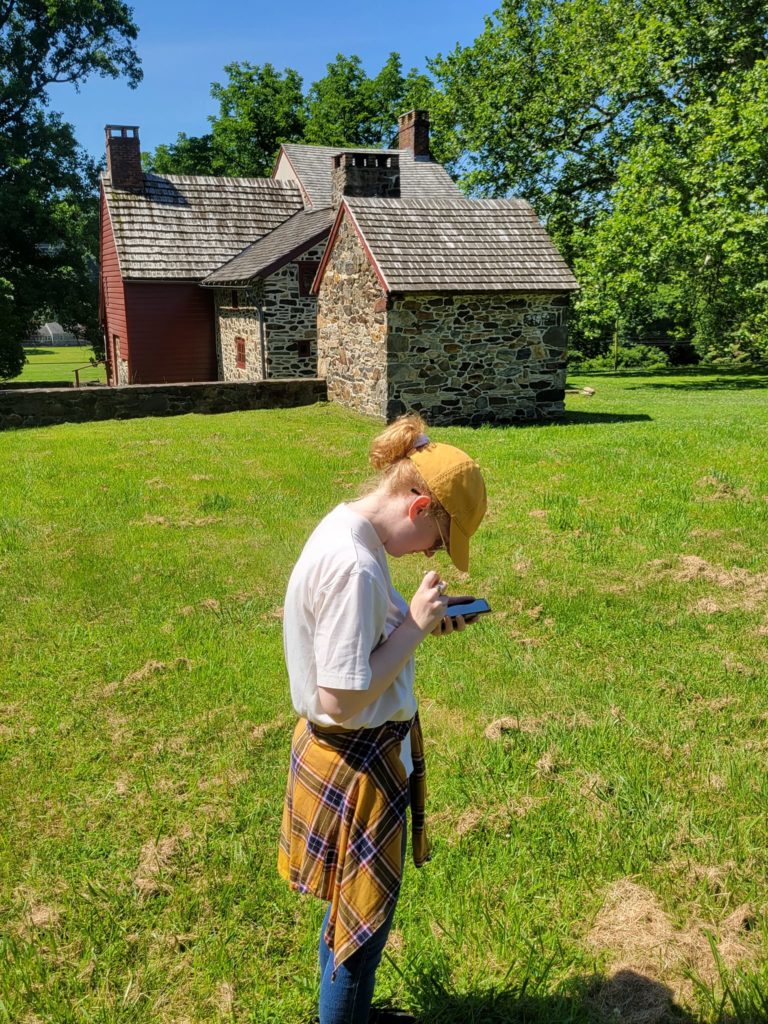My name is Sarah Hoffeditz, and I spent the first half of this summer gaining unique experiences through my internship at the Pennsylvania State Historic Preservation Office in Harrisburg, PA.
This opportunity allowed me to use the skills I have developed over the last four years to the test and learn new skills. My internship title is MARS (or Mapping, Assistance, Resources, and Survey) Sites Survey Intern. My supervisors were Elizabeth Shultz and Taylor Napoleon, and I was assisted by other PA SHPO staff.
My internship role was to research above-ground and surficial archaeological sites in five locations, develop a survey at those locations, and update the massive online database PA-SHARE using the Surveyor tools.
There are five PHMC historic sites that I had to research before site visits and surveying:
- Landis Valley Museum (https://www.landisvalleymuseum.org/),
- Historic Ephrata Cloister (https://ephratacloister.org/),
- Conrad Weiser Homestead (http://www.conradweiserhomestead.org/),
- Cornwall Iron Furnace (https://www.cornwallironfurnace.org/), and
- Brandywine Battlefield (http://brandywinebattlefield.org/).
With each location, I had to research and understand the history, the types of buildings attached to the state property, and any potential archaeological sites.
I started researching each location by first going through the sites’ websites. When overlooking the website, I developed an excel file with anything I would find. I was looking for a general map of the types of buildings, structures, or objects attached to the property. For the most part, all sites had a generalized map of their location. By looking at the map, I could see the buildings included in to the property, and often there were descriptions of the buildings.
I would then turn to PA-SHARE. Through PA-SHARE, I would look for more specific details of the buildings like the structure, foundation, wall, roof materials, dates, location description, architecture, and the purpose of the building. I collected this information because I needed to catalog the facilities at each site.
Along with that, I needed to be able to describe those buildings through those characteristics. I also looked for any potential archaeology in the area, such as demolished buildings, noticeable pits, historical documentation of previous excavations, evidence of moved buildings, or of other types of structures that are no longer there.

Another area that I investigated for documentation is speaking with the site administrators or the Friends groups of the historic sites. They usually have more historical documents or maps of the properties and a better understanding of what buildings or archaeological sites are attached to the state’s property. All information collected was put into an excel file so that I could be more organized with what knowledge I have collected and might need about the site.
A final area that I looked at for building or archaeology potential is looking through historical and modern aerials of the locations. By looking through historical aerials, I was able to see if some buildings or structures formerly existed at some point in time but are no longer there. Sometimes the dates of construction of these buildings are unknown, but if I can find historical aerials of the facilities, I can get a general understanding of the era of their construction.
Since Google maps may have clearer images of the properties, I used Google maps to review aerial images of the sites to see if there were any mysterious structures or features on the land that I should investigate during the site visit.

After collecting as much information as I could about each site, I developed a list of needs and questions for each location. That way, at the site visit, I could be prepared to gather as much information as possible.
The purpose of having a site visit to these locations was to collect photographic evidence of the buildings, structures, and potential archaeological sites, and planning the survey ahead of time enabled me to be as efficient as possible in this work I started the site visits with a debriefing with the site administrator.
As part of the debriefing I described why I was there and the purpose of the survey. I also asked any questions that I may have had about certain buildings that may or may not exist or any questions about potential archaeological sites associated with the property.
After that conversation, I then started photographing all the facilities and anything else I needed to document. A great benefit of going for a site visit is to see what else is on the property that I may not have seen in historical documents, aerials, or previous photographs.
When completing the fieldwork for the sites’ surveys, I used the SHPO’s PA-SHARE Surveyor tools, including the mobile field app on a tablet. You can read more about the PA-SHARE Surveyor tools, including the field app, in the blog post “PA-SHARE’s Surveyor is Here!”.
This app helped me provide a more accurate location of the buildings, structures, and sites than I would be able to do if I were completing a map outline on a computer miles away from the area. The app also allowed me to take photographs of the buildings and have them immediately attached to the survey without having to go through several steps to upload them to the records using only a desktop computer.

I also used the app to fill out several fields of information like descriptions, materials, or dates. The benefit of having the app instead of pen and paper is that I do not have to re-upload or refill the information when I shift to PA-SHARE. It can be automatically sent to the PA-SHARE Surveyor Manager website so that I can continue my work there.

Before entering the area, I made a survey request to PA SHPO. This request outlined where and what I intended on surveying. Once this request was approved, it gave me access to upload and record above-ground resources and archaeology.
I described the buildings’ location, appearance, and historical significance in these records. I also described the photographs I took of the buildings or areas, detailing the direction the photo was taken. The purpose of updating PA-Share is to help maintain the site and provide individuals an understanding of what buildings, structures, or features are attached to a particular property.

In addition to completing the research and fieldwork components of my internship’s survey project, I also was able to experience how other sections of the PA SHPO operate and I was able to attend the June meeting of the Pennsylvania Historic Preservation Board.
The other area where I gained more knowledge was the National Register Reviewer. I have prior knowledge about how this section operates because of working on the Determination of Eligibility (DOE) for the Midland Cemetery in Steelton, PA. While working at the SHPO, I contacted April Frantz, the National Register Reviewer. She guided me on how her section operates and advised me if I wanted to pursue writing National Register nominations.
She talked to me about how I could work for a consulting firm where I could write National Register nominations and DOEs for the firm or I could work privately and do them on my own time. She also provided templates of what the PA SHPO is looking for in DOEs. Through working on that DOE, I understood the external end of the SHPO and what is all involved in writing a DOE.
The one notable event I experienced with this section was the National Register board meeting. At this board meeting, all the elected board members voted upon several National Register nominations. All the nominations were approved, and the next step is National Park Service review and then, if accepted, official listing in the National Register. Now that I gained knowledge of the internal workings of the National Register section, I have a well-rounded understanding of how this section works.
I have thoroughly enjoyed the experiences that I have been a part of at the PA SHPO. It has been amazing to take what I have learned in the classroom and put it to the test. When I entered a chapter here at the PA SHPO, I entered a new one in my life as well. Next up I will continue on into my final semester at Shippensburg University and work hard with my studies. While this internship has come to an end, I hope my adventures with the PA SHPO have not.
Today’s guest author is PA SHPO’s summer intern, Shippensburg University graduate student Sarah Hoffeditz. You can read more Sarah in the blog post “Meet PA SHPO’s 2022 Interns!” For more information about the Pennsylvania Historical and Museum Commission’s summer internship program, visit https://www.phmc.pa.gov/About/Join/Pages/Internships.aspx.
Comment Policy
PHMC welcomes and encourages topic-related comments on this blog. PHMC reserves the right to remove comments that in PHMC’s discretion do not follow participation guidelines.
Commenters and Comments shall be related to the blog post topic and respectful of others who use this site.
Commenters and Comments shall not: use language that is offensive, inflammatory or provocative (this includes, but is not limited to, using profanity, obscene, or vulgar comments); disparage other commenters or people; condone illegal activity; identify the location of known or suspected archeological sites; post personal information in comments such as addresses, phone numbers, e-mail addresses or other contact details, which may relate to you or other individuals; impersonate or falsely claim to represent a person or an organization; make any commercial endorsement or promotion of any product, service or publication.
If you would like to comment on other topics not related to this blog post but related to PHMC, please fill out the PHMC Contact Us Form.

Sarah accomplished so much in just one summer internship! Proof that internships benefit both students and the host agency!
Thanks for all your contributions to the SHPO Sarah!
Nice work and well-written article, Sarah.